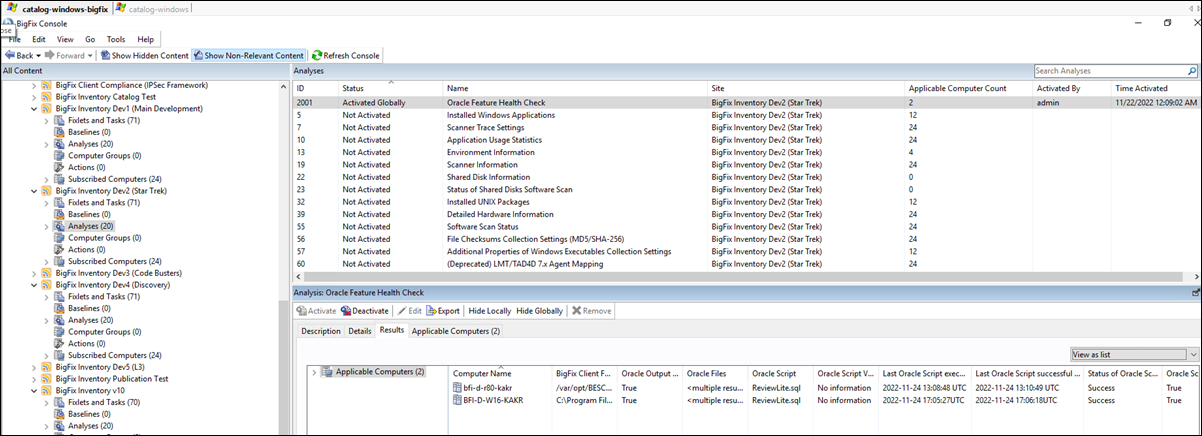 Handling common
situations with extended oracle discovery
Handling common
situations with extended oracle discovery
BigFix Inventory version 10.0.11 offers improvements related to serviceability.
Fixlet execution ends up with an exit code in the 'Computers' tab for each endpoint on which it was executed. Each exit code represents a common probable situation.
- check the exit code
- check analysis results
- check logs on a machine or get them from Computer Support Data
- contact support (HCL or Oracle as per the need)
Get Oracle Database Measurements Fixlet results
When you activate the Get Oracle Database Measurements fixlet, two types of results are received; Failed or Completed. The below image shows both the scenarios where some of the scan is complete and some have failed. The details, such as Exit code, computer name that were scanned, the operating systems, the CPU, last report time, etc, are also displayed.

Extended Oracle Discovery exit codes
The Extended Oracle Discovery feature in BigFix Inventory exit codes which provide feedback about issues occurred when you run the scan for databases. See Exit codes when Get Oracle Database Measurements fixlet is run for details.
Oracle Features Health Check fixlet results
To check whether the task completed successfully or to troubleshoot a problem, go to Analyses, right-click Oracle Features Health Check, and then click Activate. The analysis provides information about the type and version of Oracle script that was initiated though the Get Oracle Database Measurements fixlet. It also provides information about the time of last execution of the fixlet, and its status: Success, Failure or Partial Success. If the status is Partial Success, the script was run successfully only on some Oracle instances on a given computer.

Obtain Get Oracle Database Measurements Fixlet logs
You can obtain the fixlet logs in the below location:
 /var/opt/BESClient/LMT/ORACLE/auditing/database
/var/opt/BESClient/LMT/ORACLE/auditing/databaseThe fixlets logs are available in the oracle.log file. When debug mode is enabled more detailed information is saved in same file.
 C:\Program Files (x86)\BigFix Enterprise\BES
Client\LMT\ORACLE\auditing\database
C:\Program Files (x86)\BigFix Enterprise\BES
Client\LMT\ORACLE\auditing\databaseThe fixlets logs are available in the oracle.log file. When debug mode is enabled, the debug pieces of information are saved in script_trace.txt.
For more information on obtaining logs, refer to Collecting logs for troubleshooting purposes.